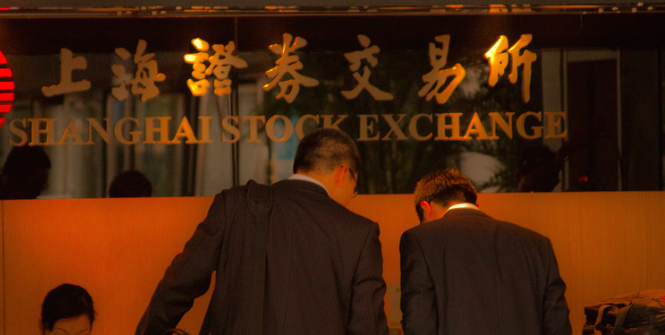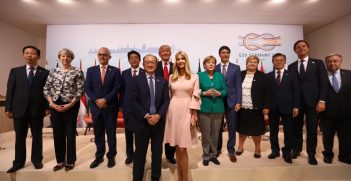Still a Long Way to Go for China's New Normal

As the world’s second largest economy shudders, and the Chinese government addresses the dramatic dive in its stock markets, Professor Ross Garnaut compares China’s new model for growth with the old one.
China’s old model of growth produced the strongest, most resource-intensive economic growth the world has ever seen. But the period in which China’s growth dominated world demand for energy and metals and lifted global commodities prices to unprecedented levels has come to an end. This is most decisive for commodities like coal, for which production or use has large negative effects on local and global environmental amenity.
China accounted for most of the global increase in demand for coal and steel during 2000–08 and more than the whole from the global financial crisis in 2008–11. By 2011, China accounted for nearly half of global use of both commodities. But Chinese demand growth for coal and steel decelerated sharply from 2012 and became negative in 2014. This caused negative growth in global demand also.
China’s old model was built on high and rapidly increasing levels of investment, especially in industrial activity and urban infrastructure. It was supported by huge rural–urban migration, allowing strong growth in urban employment with modest increases in real wages. With wages growing slower than output, the profit share of income rose continually, in turn supporting increases in savings. Much of these massive savings were committed to investment, reinforcing the process of investment-led growth.
China’s response to the external shocks of the Asian and global financial crises increased the pressure of Chinese growth on international energy and metals markets. Investment is much more metals and energy intensive than consumption. So the implementation of large Keynesian monetary and fiscal expansion through expanding investment through state-connected entities — which were disproportionately focussed in infrastructure and heavy industry — intensified the role of investment in China’s economy.
The extraordinary rates, investment intensity, energy intensity and metals intensity of growth in the world’s most populous country generated the largest, longest and most broadly based increase in commodity demand that the world economy has ever experienced.
Now, though, two separate forces are driving the transition to the new model of lower investment and higher consumption. One is the result of straightforward economic pressures. The other is the change in China’s national objectives and policy towards a more equitable distribution of income and less damaging impacts on the domestic and international natural environment. .
China’s new model of economic growth — now described by the Chinese leadership as the ‘new normal’ — embodies structural change at an immense scale and pace. But China has made little progress towards the macroeconomic structural changes that are necessary for the new model’s success. Most of this lies ahead.
Lower growth rates since 2011 seem to reflect the effects of structural problems inherent in the old model of growth more than the effects of transition to the new model. From 2011 China has been more reliant on increases in the capital stock than any point since 1978, while growth in total factor productivity has — as in many countries — had a declining impact on output since 2008. Growth in total factor productivity in China has been high by international standards through most of the reform period, but by some measures stopped in 2014. This must be reversed for China to make a smooth adjustment to the new normal.
Though the long, upward movement in the investment share of output and the fall in the consumption share have been brought to an end, the reversal of the old trends has barely begun. The upward adjustment in domestic expenditure relative to income has secured the necessary moderation of the immense pre-crisis trade and current account surpluses, yet it did this through increasing investment more than consumption.
The considerable moderation in investment in industries excessively favoured by the old model has yet to be joined by significant moderation of overall investment. And the large decline in productivity growth is reducing the prospects for the eventual decline in capital’s growth contribution being substantially offset from this source, at least in the early stages of transition.
The Chinese government has been active in the shift to a more environmentally sensitive growth model. China has reduced its energy intensity in recent years more rapidly than any other country. Many and varied policy interventions have been applied to moderate demand for electricity and shift supply away from coal. The most powerful early interventions were regulatory: the forced closure or transformation of facilities that failed to meet increasingly high emissions standards. Subsidies for production and use of low-emission technologies were influential. Increased taxes and reduced subsidies on fossil fuels had large effects.
The government has now heralded a shift towards market-based mechanisms. The pilot emissions trading schemes in five cities and two provinces will be merged into a national scheme from 2016. Regulatory interventions, taxes and subsidies are likely to remain important in maintaining momentum in the transformation of the local and global environmental impact of the Chinese energy sector.
Global supply of energy and metals was slow to respond to the acceleration of Chinese demand growth from the beginning of the century, leading to extraordinary price increases. Now global resources industries are left with a problem of oversupply and the challenge of adjustment of historic dimension. Prices can be expected to continue to fall until global markets adjust to lower levels of Chinese demand.
China has made a start on the transition to its new model of growth. It has made a big start in reducing the environmental impact of economic growth. But all elements of transition have a long way to go.
The annual China Update conference will be hosted at the University of Melbourne by the Centre for Contemporary Chinese Studies and the ANU’s China Economy Programme on July 8 and at the ANU by the China Economy Program in collaboration with the East Asia Forum on 9–10 July 2015.
Ross Garnaut is a professorial research fellow in economics at the University of Melbourne. This article is a digest of Professor Garnaut’s chapter from the publicationfor the latest China Update to be held at the ANU on Friday 9 July. This article was originally published in the East Asia Forum on July 5, 2015. It is republished with permission.





